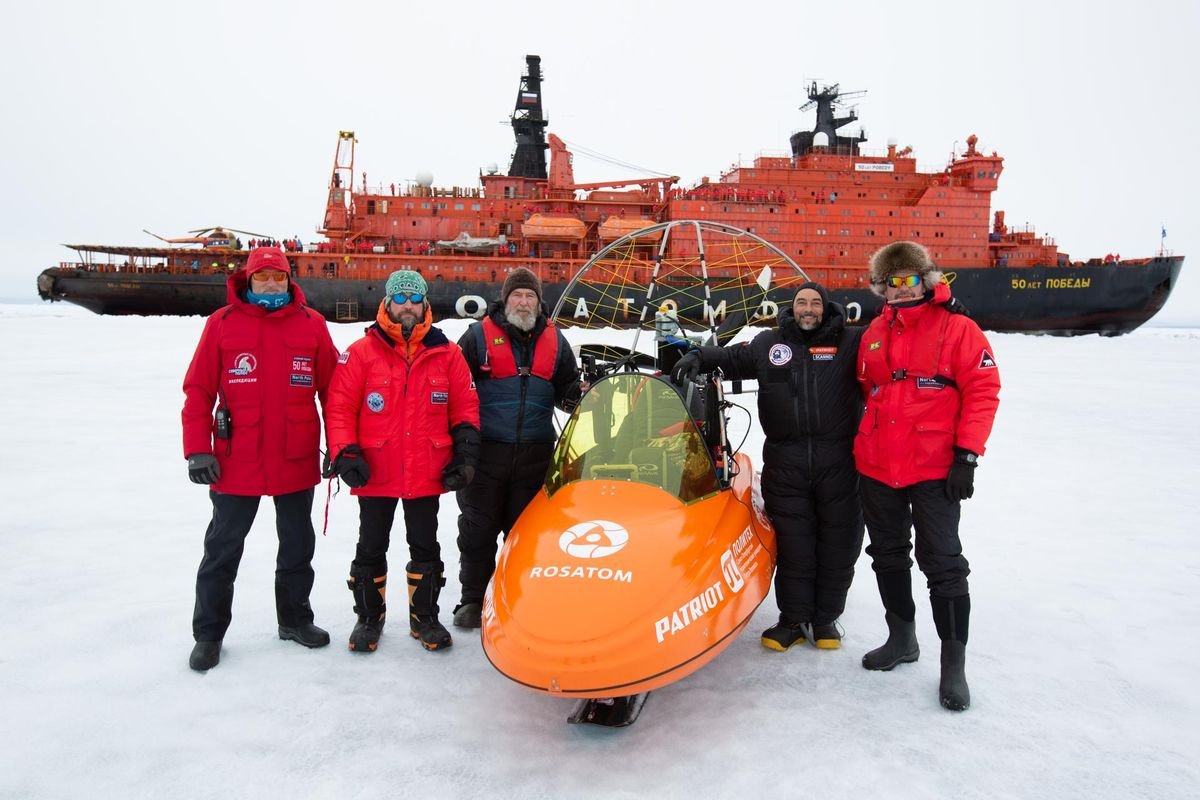
Russian pilots Fyodor Konyukhov and Igor Potapkin attempted the world's first successful flight in a two-seat powered parachute (motorized paraglider) from the Franz Josef Land archipelago to the geographic North Pole. The crew was transported to the route's starting point by the nuclear-powered icebreaker 50 Let Pobedy owned by Atomflot, a Rosatom company.
.jpeg)
Rosatom also supplied high-tech materials to make a unique fairing (an auxiliary structure for the external surface of a vehicle, such as an aircraft, that serves to reduce drag) fitted to the paraglider. The fairing with integrated fuel tanks was designed and manufactured under scientific guidance and technological supervision of the Advanced Engineering School "Digital Engineering" of Peter the Great St. Petersburg Polytechnic University. Carbon and glass fiber-based fabrics were used to make this product. The aerodynamic parameters of the paraglider allowed increased flight range for the Russian crew from 900 to 1200-1300 km.
.jpeg)
The record-setting flight at an altitude of 267 to 835 meters above the surface of the Arctic covered 440 km and lasted 10 hours and 13 minutes. The average speed was 47 kilometers per hour.
After landing, the travelers by satellite phone reported about their successful flight to North Pole, where they set up camp. They were in regular contact via satellite, and their buoys were transmitting coordinates automatically.
“Rosatom has always provided me with technological support. It is no exaggeration to say that the Rosatom specialists working with composites have significantly contributed to our project's success. Today, Russia’s composites industry has also set a record, because the glass and carbon fiber used in the paraglider has been tested for durability in harsh Arctic conditions," Fyodor Konyukhov commented on the flight.
After analyzing the data from the onboard satellite trackers, a proper record-setting case will be filed for reaching the geographical North Pole on a motorized paraglider.



